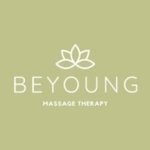A pulled quad muscle, also known as a quadriceps strain, is a common injury among athletes, fitness enthusiasts, and anyone engaged in sudden physical activity. Many people wonder: Should you massage a pulled quad muscle? Knowing the right approach can speed up recovery, minimize pain, and prevent long-term complications. This guide covers everything you need to know, including the benefits and risks of massaging a strained quad, recovery strategies, and answers to the most common questions.
What Is a Pulled Quad Muscle?
A pulled quad occurs when the muscle fibers in your quadriceps (the group of four muscles at the front of your thigh) are overstretched or torn. This injury often results from activities that involve running, jumping, or sudden changes in direction.
Key symptoms of a pulled quad muscle include:
- Sharp pain in the thigh
- Swelling or bruising
- Difficulty walking or bending the knee
- Muscle tightness or spasms
Should You Massage a Pulled Quad Muscle?
Short Answer:
Avoid massaging a freshly pulled quad muscle within the first 48-72 hours. After the initial inflammation decreases, gentle massage can help promote healing, reduce muscle tightness, and improve flexibility.
Detailed Answer:
In the Acute Phase (First 48-72 Hours):
- Do NOT massage.
- Massaging during this period can worsen bleeding, swelling, and tissue damage.
- Focus on the R.I.C.E. protocol (Rest, Ice, Compression, Elevation) to reduce inflammation.
After the Acute Phase (Post 72 Hours):
- If pain and swelling have subsided, gentle massage may be beneficial.
- Massage improves blood flow, breaks down scar tissue, and reduces stiffness.
- Always start with light strokes and avoid deep pressure on painful or bruised areas.
Expert tip: If unsure, consult a physical therapist before starting massage therapy.
Benefits of Massage for Pulled Quad Muscles
- Promotes Circulation: Increases blood flow to the injured muscle, delivering nutrients for faster healing.
- Reduces Scar Tissue: Helps break down adhesions that can limit flexibility.
- Relieves Muscle Tightness: Eases tension and improves range of motion.
- Accelerates Recovery: When combined with stretching and strengthening, massage supports a quicker return to normal activities.
How to Massage a Pulled Quad Muscle Safely
- Wait until swelling subsides.
- Use gentle, gliding strokes (effleurage) to warm up the area.
- Gradually apply more pressure as tolerated—never cause pain.
- Avoid direct pressure on areas with bruising or severe tenderness.
- Limit sessions to 5-10 minutes in the early stages.
- Pair with gentle stretching and heat therapy for optimal results.
When Should You Avoid Massaging a Pulled Quad Muscle?
- Severe pain, swelling, or bruising is present.
- Suspected muscle tear or rupture.
- Numbness, tingling, or loss of strength in the leg.
- Visible deformity, lump, or gap in the muscle.
- You’re unsure of the injury’s severity—consult a healthcare professional.
Additional Recovery Tips for a Pulled Quad Muscle
- Follow R.I.C.E. in the first 48-72 hours.
- Gradually reintroduce movement and gentle stretching as pain allows.
- Stay hydrated and maintain a balanced diet to support healing.
- Avoid strenuous activity until the muscle is fully recovered.
- Seek professional advice if symptoms persist or worsen.
FAQs
Can you massage a pulled quad muscle right away?
No, you should avoid massage for the first 48-72 hours after injury to prevent further tissue damage.
What is the best type of massage for quad strains?
Swedish or sports massage, starting gently and increasing pressure only as healing progresses.
How long does it take to recover from a pulled quad muscle?
Mild strains may heal in 1-2 weeks, while severe injuries can take several weeks or longer.
Should you stretch a pulled quad muscle?
Only after the acute pain and swelling have subsided. Gentle stretching aids in recovery, but avoid overstretching.
Conclusion
Massaging a pulled quad muscle can be beneficial if done at the right time and with the correct technique.
- Don’t massage immediately after injury—wait for swelling to decrease.
- Use gentle strokes and avoid deep pressure.
- Always listen to your body and consult a healthcare provider if you’re unsure.
Proper care ensures a faster, safer recovery and gets you back to your routine with confidence.






